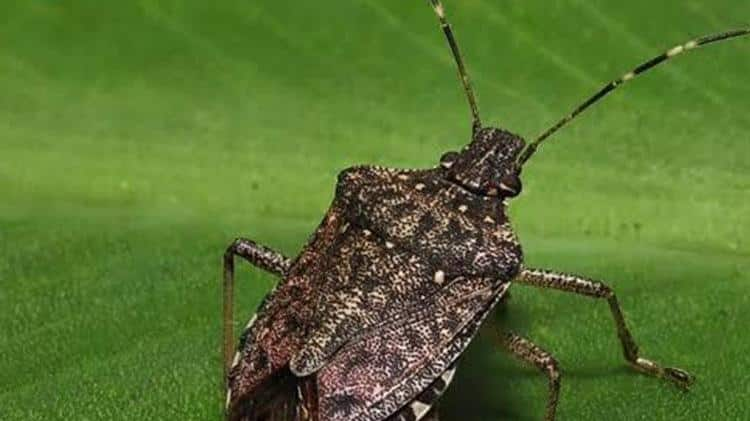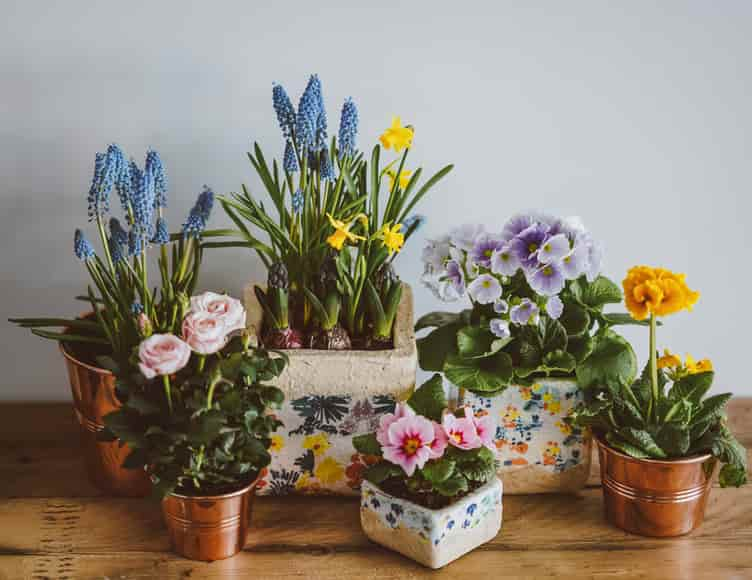How To Destroy Harmful Insects In Your Flowers Naturally?
Flowers that add beauty to their living spaces are sometimes invaded by insects.
You may have to say goodbye to your flowers when you cannot find the cause and solution.
So, are there natural solutions to kill insects in flowers? In this article, we will tell you how to get rid of insects that harm your flowers with natural solutions that you can prepare at home.
Nature has a perfect balance. All living things in the air, soil or water are necessary to maintain this balance.
Therefore, while trying to destroy the insects that harm your plants, it is necessary to continue this struggle without harming the balance of nature.
Organic pesticides, which are natural remedies for insects, have many benefits. These are listed below:
- It allows you to protect your plants without harming the ecological balance.
- It does not destroy bacteria and insects that are beneficial to the soil.
- Organic remedies or home remedies, which you can make with materials you can find at home, save your budget.
We will talk about what materials we will use at home to get rid of the insects that haunt our beautiful flowers, which we care with a thousand and one effort.
Hydrangea, orchid, calendula, it doesn’t matter. You can use these drugs on your flowers.

What Will We Learn?
How To Destroy Harmful Insects In Your Flowers Naturally?
Making homemade insecticide, the natural remedy for insects in flowers, is not difficult.
You just need to know which product to use and for what.
You can easily save your plants from insects with natural solutions, most of them at home, and maybe by purchasing a few additional products.
But first you need to pay attention to some details:
- Insects on your plants can be beneficial or harmful. You should consider this situation when making pesticides for insects on flowers.
- Instead of destroying these creatures that maintain the balance of nature, it will be a much more beneficial effort to try to get them to give up on your plant.
- If insects and flies have started to appear in the soil of your plants, you should first use the method of drying the soil of your plant. Insects and flies love watery soils. For this reason, it is the most important step to dry the soil of your plant first.
Insects on flower petals can be harmful or harmless to your plants.
For this reason, you must first determine what the insect is infesting your plant.
You can use a few apps for this or ask the florists around you.
Now, let’s come to the methods of getting rid of:

1, Aspirin Water
When it comes to natural solution for insects in flowers, the first thing that comes to mind is water with aspirin.
With this mixture, you can get rid of insects in the soil of your plant.
Mix a few aspirins with some water and let the aspirin dissolve in the water.
Then pour some of this water into the soil of your flowers.
It will both feed your plant and repel aphids and insects living on your plant.
2. Vinegar
Vinegar is used in the home and is also known by many as a pesticide.
Aphids cannot stand vinegary water. It is possible to get rid of aphids with a natural solution using apple cider vinegar, flower oil or powdered pepper and white vinegar.
You need to spray these mixtures on all the leaves of the plant.
3. Milk
Milk is a substance that you can apply to your plants for the treatment of powdery mildew and fungus.
You should dilute the milk with water and apply it to the plants before the noon sun comes out.
In order not to cause other problems, it should not be used in the afternoon sun and evening hours.
4. Cigarette Butts
Cigarette butts are among the most commonly used natural solutions to combat insects.
Ash and tobacco are disliked by soil-dwelling insects.
For this reason, if you leave a few pieces of butts on the soil of your plant, the insects will get away from your flower.
If you want to make a more effective medicine, collect cigarette butts in a plastic bottle filled with some water and leave them for a few days.
Then pour little by little into the soil of the plant.
5. Tomato Leaf
Tomato, potato and tobacco leaves contain poisonous alkaloids.
These toxins are water-soluble, and homemade remedies can be obtained by soaking finely chopped leaves in water.
These drugs also play a role in attracting natural enemies.
Tomato foliar spray can be used for aphids.
At the same time, tomato foliar spray is effective against Heliothis zea in maize.
In the study, it was observed that when the corn plant was sprayed with tomato leaf spray, it attracted more Trichogramma than the untreated corn.
To prepare this solution, the tomato leaf is finely chopped and 1-2 cups are prepared.
It is kept in 2 cups of water all night. It is filtered and mixed with approximately 2 cups of water.
The application is made to cover all parts of the plant.
6. Garlic
Garlic is a very useful product for human health.
But you can also repel insects with garlic.
For this, you need to peel the garlic and add a few to the soil of the plant.
If you are struggling with whitefly or spider mites, finely crush 1 clove of garlic and mix it with a teaspoon of flower oil and 1/4 teaspoon of ground red pepper.
But let your pepper be hot. Then add 1 glass of water to the mixture and wait 24 hours.
After 24 hours, add your mixture to 1 liter of water and apply it all over your plant with a spray bottle.
It is very difficult to fight the leaf-eating caterpillar.
There are many caterpillar drugs on the market, but it is quite difficult to use a chemical-free drug that can solve this problem without killing the caterpillars.
The garlic spray you have prepared is an application that can be used in the fight against caterpillars.
7. Pyrethrum
The pyrethrum contained in the chrysanthemum flower helps to protect the plants from insects.
You can use ready-made pyrethrum powder for this.
But if you have a chrysanthemum flower at home, boil a piece of dried flower in 1 liter of water for half an hour on low heat.
Then cool it and spray it on your plant. It will ensure you get the same result.
8. Salt Spray
The most effective method of combating red spiders is to use salt spray.
The recommendation of the Ministry of Agriculture is to add 2 full tablespoons of salt to a 4.5-liter water can and shake it well and apply it to the plant with a spray.
Then you will see the spiders leave your flower.
9. Cayenne Pepper
This product is a substance that is used very often in the fight against insects.
Cool the powdered red pepper you have kept in hot water and dilute it with some water.
Add olive oil. In addition, you can strengthen your medicine by adding natural powder soap.
Use in the fight against insects by spraying on the leaves and stems of plants.
10. Red Powders
Black pepper, paprika, dill, ginger all contain capsaicin.
It has a repellent effect on insects.
Synthetic capsaicin can be produced for use in the field.
In a study, it was determined that when 1/25 of 28 grams of capsaicin was sprinkled around the onion plant, Delia antiqua reduced the number of eggs laid.
It also prevents Delia radicum from damaging cabbage and carrots.
However, the use of prepackaged chili powders may not be economical.
If the grower also produces his own, it will be more convenient to use because the cost is reduced.
It may cause irritation on sensitive skin during application.
It can be applied by sprinkling on carrot, cabbage or onion rows.
The application should be repeated after rain or irrigation.

How To Destroy Worms At The Bottom Of Pots?
Although not very common in potted plants, there is a possibility that worms may appear.
Worms do not harm the soil or your plant. However, it is natural that you do not want it to be in a plant pot that you feed especially at home.
You can remove the worms from the potting soil one by one and release them into nature.
If you can’t do this, you should take your plant to the balcony or garden and apply the medicine we will explain to the plant so that the worms can escape.
- Dry some vegetable and fruit pieces, and then crush or pulverize these leftovers.
- Let it stand for up to 2 days in a warm environment. In this way, these dried parts will rot. Make rotting easier by sprinkling water occasionally.
- Apply to the soil of the plant at a time when the plant is not receiving light. Wait at least 5 hours. You will see the worms come to the surface of the soil. This way you can separate them from your plant.
Another effective and healthy method is to put your pot in a garden on a rainy day that is not too cold.
Worms will leave your plant to find a more comfortable place for themselves.
Homemade remedies do not contain chemical components, so it will take some time for them to work.
For this reason, we advise you to be patient.
You may also like our article where we provide detailed information about the Eucalipto plant.
Resources I used:
